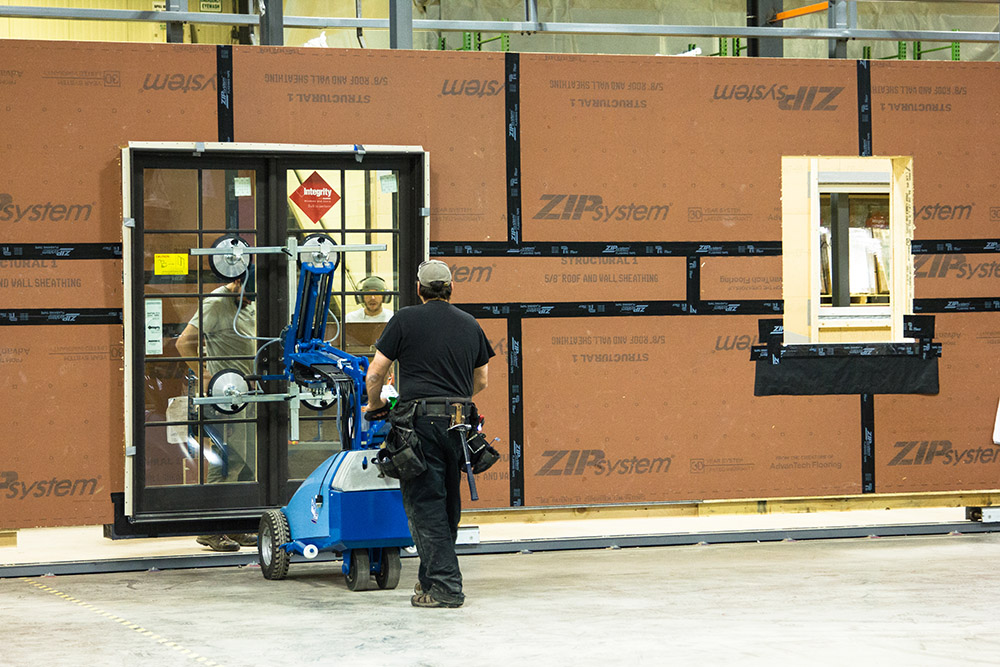
When it comes to offsite construction, there are a lot of skeptics. They say, “We have seen this movie before”. People point to the fact that over the past 100 years, several companies have bet on prefab building and lost. Things have changed now. Since shop class disappeared from our school curriculum, a skilled labor shortage has been creeping into the construction industry. That shortage was filled to some degree by cheap labor from the south, but new immigration policies are catapulting the construction industry into a labor shortage the likes of which has never been seen before. This has lead to a dearth of affordable housing and rising costs that have made offsite construction a viable option yet again.
Labor Shortages Plague the Construction Industry
After the recession decimated the housing market, 1.5 million construction professionalsleft the sector to find jobs elsewhere. According to the National Association of Home Builderssurvey, builders reported a 43% labor shortage for building maintenance managers and 75% for carpenters with 85% of construction professionals reporting a shortage of subcontractor framers.
Labor shortages saw a low of 21% in 2012 which rose to 56% in 2016 and again to 63% in 2017. The number of residential construction workers is 23% lower than in 2006. The average age of skilled construction workers in the US is 50, so these numbers are only set to get worse in the future.
Housing Crisis and Rising Prices
America needs houses, but there just aren’t enough people to build them. The average price of houses has gone up by 5% every year over the last three years. That percentage is even higher in cities for example, the Bay Area in California has seen a 30% rise in prices over the last three years.
Some cities have tried to alleviate the housing shortage by relaxing building regulations or allowing builders to build higher, but these measures do little good when there are no workers to build the structures. What is needed is a more affordable, less labor-intensive method for building residential housing. One option here is to build off-site. That would allow prefab homes to be constructed in factories that only require a few workers to assemble them onsite. These offsite buildings are either prefabricated panels that can be assembled onsite or modular apartments that can be stacked together and changed according to the shifting needs of the neighbourhood.
Construction industry profits are slim, so little is reinvested in research and development. Building is a high-risk business so investors are reticent to take chances on new technology. Many are forced to rethink that strategy now as labor shortages and rising costs lead investors to seek alternative construction methods to get their houses built.
According to the McKinsey Global Institute, the construction productivity rate has remained constant since 1945. While tools and building materials have evolved, innovation has been slow in changing the way we build residential houses.
Prefabricated housing isn’t a new concept. The British shipped homes across the globe as the colonization spread. It is a concept that has cropped up from time to time and even Sears shipped home kits that owners could assemble. While prefabricated homes have enjoyed success in Europe, they just haven’t stuck in the US. One reason is that land has been reasonably cheap and construction costs low so building you own home has been affordable. Another reason has been an abundance of cheap labor but, with the changing labor dynamic, costs are skyrocketing.
Offsite building offers the guarantees that construction companies cannot. Work is consistent, timelines are predictable and costs are lower. Fewer skilled workers are required both in the factory and onsite which means that costs are not affected by labor shortages.
There are a lot of legitimate challenges for offsite construction in the US. To bring costs down significantly, you need scale and automation which both require sizable capital expenditure. To make money, you need to run plants full out and to do that, you need a consistent order file—quite challenging in a business as cyclical as residential or non-residential construction. The other challenge that goes along with scale is the need to access a larger market area and that means shipping across state lines (code jurisdictional boundaries) which in turn means building code challenges.
While these are challenges that need to be overcome for the offsite construction industry to prosper, we may not have a choice but to find solutions to them if cities are to provide the affordable housing needed for growing populations.


